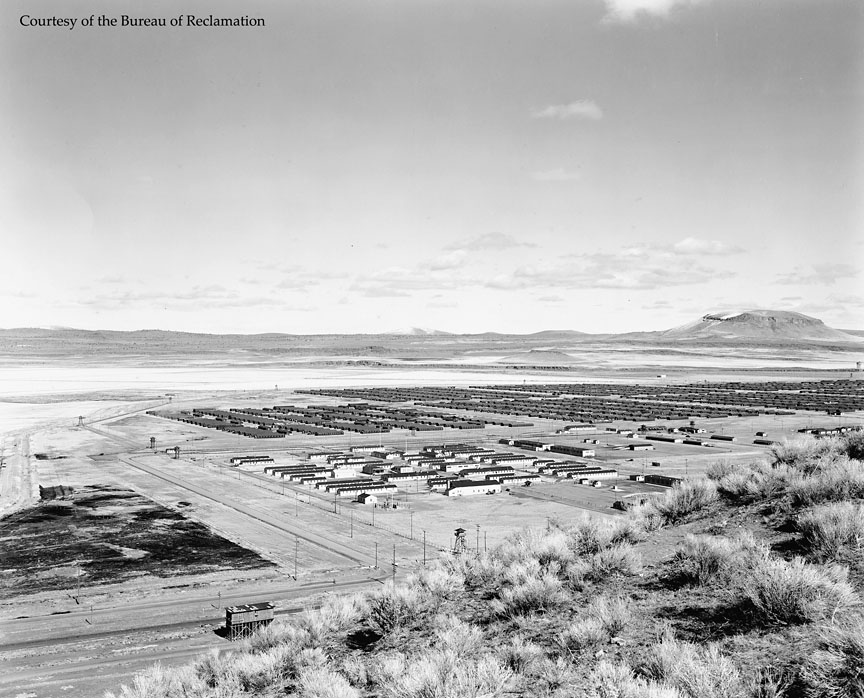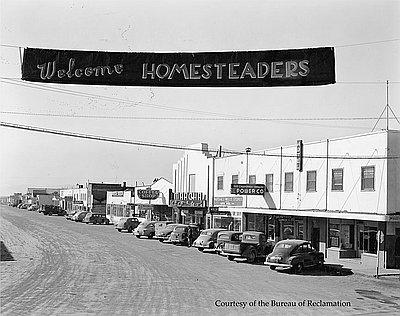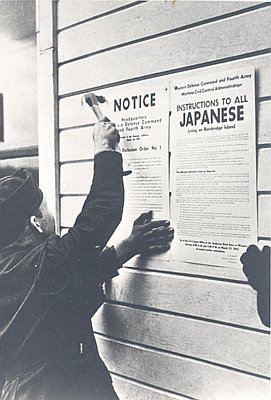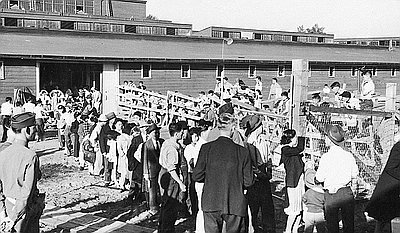The Tule Lake Relocation Center, seen here in 1947, is located about thirty miles southeast of Klamath Falls near Newell and Tulelake, California. Opened on May 27, 1942, it eventually held 18,000 Japanese American prisoners. After the center closed in March 1946 and the prisoners had been released, the War Relocation Authority returned the land to the Bureau of Reclamation. The Bureau sold small parcels of the land to private investors and to the California Department of Transportation (CalTrans), and many of the center’s buildings and structures were purchased by returning World War II veterans who removed the buildings or dismantled them for scrap.
In August 1975, the Relocation Center was registered as a California State historic landmark, and a large monument was constructed in 1979 on California State Highway 139 to commemorate the site. The Harvey Yoshizuka Sand House, built by CalTrans on the Relocation Center site, honors a young prisoner who became an engineer for the transportation department.
Nearly fifty years after the imprisoned Japanese Americans were allowed to leave the Tule Lake Relocation Center, the U.S. government acknowledged “the fundamental injustice of the evacuation, relocation, and internment of citizens…of Japanese ancestry during World War II.” The Civil Liberties Act of 1988 mandated Congress to pay each imprisoned Japanese American $20,000 in reparations. The compensation was delivered with a letter from President Bill Clinton, who acknowledged the “wrongs of the past” and apologized for the nation’s treatment of Japanese Americans during the war.
Further Reading:
Olmstead, Timothy. “Nikkei Internment: The Perspective of Two Oregon Weekly Newspapers.” Oregon Historical Quarterly, 85, 1984: 5.
Azuma, Eiichiro. “A History of Oregon’s Issei, 1880-1952.” Oregon Historical Quarterly, 94, 1993: 315.
Written by Robert Donnelly, © Oregon Historical Society, 2003.



